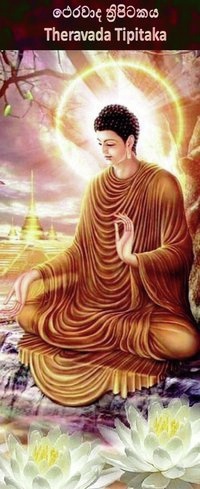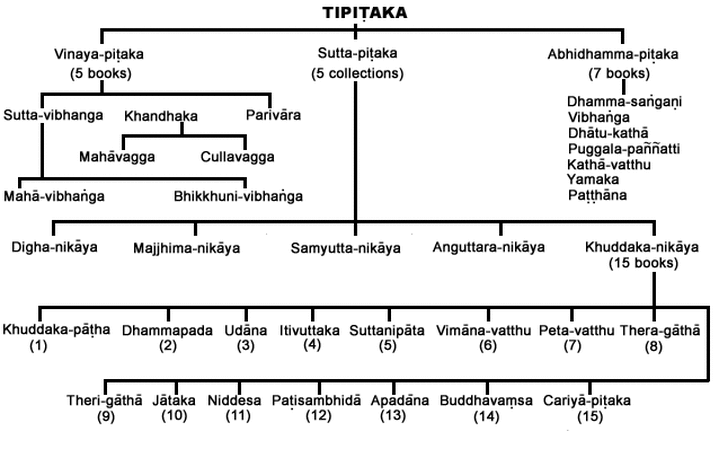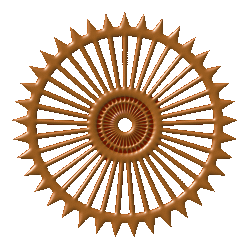
බලංගොඩ ආනන්ද මෛත්රි හිමිපාණන් වැලිවිට සෝරත ස්ථවිරයන් වැනි පණ්ඩිත හාමුදුරුවරුන් පනස් නමක් පමණ වසර 32 ක් පුරා මහන්සියෙන් කරන ලද සංස්කරණය පිරිසිදු සිංහල සහ ධර්මය ථෙරවාද ත්රිපිටකයඅප භාග්යවත් අර්හත් සම්මා සම්බුදුරජාණන් වහන්සේ විසින් ස්වකීය ශක්තියෙන් අවබෝධ කර ලෝ සත්නට අනුකම්පා පිණිස දේශිත, උතුම් වූ ශ්රී සද්ධර්මය ට අයත් වූ, මහා කාශ්යප මහ රහතන් වහන්සේගේ ප්රධානත්වයෙන් පැවැති ප්රථම සංගායනාවෙහි දී ආනන්ද මහ රහතන් වහන්සේ ද ඇතුලු පන්සියයක් මහ රහතන් වහන්සේලා විසින් සංගායනා කරන්නට යෙදුනු අසූහාරදහසක් වූ ධර්ම ස්කන්ධය, ත්රිපිටකය යි.
The ultimate objective in Buddhism is attained by purifying and improving mind. However, understanding what “mind” is a quite complicated act for any person. This is a barrier for someone who is interested in learning Buddhism in-depth. One of the teachings in Buddhism which provides a comprehensive analysis on mind is “Abhidhamma”.
The Buddhist doctrine is categorized into three, which is known to anyone, as “Thripitaka” namely Suthra Pitaka, Vinya Pitaka and Abhidhamma Pitaka. Vinaya Pitaka consists rules of conduct for Sangha and Suthra Pitaka consists of Suttas containing the central teachings of Buddhism. Suthra Pitaka is mostly on “Conventional Teachings” (Sammuthi Dheshana) of Buddhism. Abhidhamma Pitaka provides a theoretical framework for the doctrine principles in Suthra Pitaka which could be used to describe “Mind and Matter”. Hence, Abhidhamma embraces the “Ultimate Teachings” (Paramaththa Dheshana) in Buddhism.
Abhidhamma Pitaka consists of seven treatises;
1. Dhammasangani
2. Vibhanga
3. Dhatukatha
4. Puggalapannatti
5. Kathavatthu
6. Yamaka
7. Pattthana
The term “Abhidhamma” simply means “Higher Doctrine”. It is an in-depth investigation to mind and matter. It answers many intricate points of Dhamma. It analyses complex machinery of human, world, mind, thoughts, thought-process, mental formations and etc. Therefore it is indeed a complex doctrine to understand. However, there are many who are interested in learning this beautiful branch of doctrine. Amongst them there are plenty of non-Buddhists as well. This effort is to present this doctrine in an “Easy to Understand” manner.
The ultimate objective in Buddhism is attained by purifying and improving mind. However, understanding what “mind” is a quite complicated act for any person. This is a barrier for someone who is interested in learning Buddhism in-depth. One of the teachings in Buddhism which provides a comprehensive analysis on mind is “Abhidhamma”.
The Buddhist doctrine is categorized into three, which is known to anyone, as “Thripitaka” namely Suthra Pitaka, Vinya Pitaka and Abhidhamma Pitaka. Vinaya Pitaka consists rules of conduct for Sangha and Suthra Pitaka consists of Suttas containing the central teachings of Buddhism. Suthra Pitaka is mostly on “Conventional Teachings” (Sammuthi Dheshana) of Buddhism. Abhidhamma Pitaka provides a theoretical framework for the doctrine principles in Suthra Pitaka which could be used to describe “Mind and Matter”. Hence, Abhidhamma embraces the “Ultimate Teachings” (Paramaththa Dheshana) in Buddhism.
Abhidhamma Pitaka consists of seven treatises;
1. Dhammasangani
2. Vibhanga
3. Dhatukatha
4. Puggalapannatti
5. Kathavatthu
6. Yamaka
7. Pattthana
The term “Abhidhamma” simply means “Higher Doctrine”. It is an in-depth investigation to mind and matter. It answers many intricate points of Dhamma. It analyses complex machinery of human, world, mind, thoughts, thought-process, mental formations and etc. Therefore it is indeed a complex doctrine to understand. However, there are many who are interested in learning this beautiful branch of doctrine. Amongst them there are plenty of non-Buddhists as well. This effort is to present this doctrine in an “Easy to Understand” manner.
ශාසනාභිවෘද්ධිකාමී,
සමින්ද රණසිංහ.
2009.06.28
සමින්ද රණසිංහ.
2009.06.28

The Government of Sri Lanka sponsored the Translation of Tipitaka in to Sinhala on 1956 and the project was undertaken by a prominent team of scholars from the sangha community. Theis gigantic task was completed only on 1990 January with the publication of the last book by the Government Publisher.
As some people are trying to publish their own versions and interpretations of tipitaka as genuine we believe Sinhala Public should read the authentic translation so meticulously carried out by our sangha fathers before jumping on the band waggon of new versions of Tipitaka.
The series comprises of 40 volumes and 57 books. The series fills book case almirah. In order to make it available for the public and prserve it Mr Saminda Ranasinghe embarked on converting the printed books to electronic versions. He deserves the merits of all this hard work.
As some people are trying to publish their own versions and interpretations of tipitaka as genuine we believe Sinhala Public should read the authentic translation so meticulously carried out by our sangha fathers before jumping on the band waggon of new versions of Tipitaka.
The series comprises of 40 volumes and 57 books. The series fills book case almirah. In order to make it available for the public and prserve it Mr Saminda Ranasinghe embarked on converting the printed books to electronic versions. He deserves the merits of all this hard work.
Sutta Pitaka
Digha Nikaya Majjhima Nikaya Samyutta Nikaya Anguttara Nikaya Khuddaka Nikaya |
Vinaya Pitaka
Abhidhamma Pitaka
|






